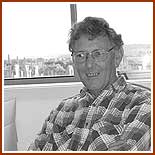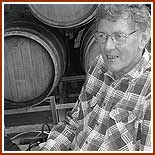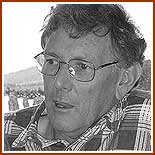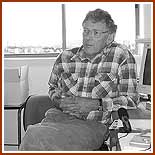 |
|
 "In 1939 about a million hectares of ash forest were burned. That’s equal to five thermonuclear weapons or five hydrogen bombs. If anybody thinks we have the capacity to control that, they're totally mistaken."  "The 1939 fires were a huge event and there is no possibility of understanding fire in Australia without reference to 1939."  "How does a fire actually spread? Why does it spread? There’s hardly anybody making significant advance in that area."  "I think the only people who accept fire as part of our environment are the indigenous people and many of our traditional graziers." |
David Packham Fire Managment Consultant – CSIRO Scientist for 18 years and now consulting in the area of Fire Management in Indonesia  The area that was burned, the intensity of the fires, raises all sorts of questions and it really happened at the time when we were going from fire determined by indigenous practice which I think is the appropriate practice for fires to a Euro-centric fire exclusion policy which has been demonstrated to fail almost everywhere. The 1939 bushfires demonstrated its failure. This fire season we’ve just had demonstrates it again and despite these very apparent failures in our Euro-centric approach to it, or fire exclusion approach, we don’t seem to be learning. Now, in any policy question in fire, especially in south-eastern Australia and to some extent in south-western Australia, you have to go back and you have to understand 1939.  Fire is determined by fuel and ignitions. If people don’t light it, then nature will light it through
lightning strikes. If the fuel is there, then sooner or later the weather will come - and the esoteric science of thermodynamics says that if a thing can burn, it will. Fire is determined by fuel and ignitions. If people don’t light it, then nature will light it through
lightning strikes. If the fuel is there, then sooner or later the weather will come - and the esoteric science of thermodynamics says that if a thing can burn, it will.When you look at the fuels that were in existence in ’39 - the fuels loads were less than what they are now and they were less because the graziers did a serious quantity of burning. We have more fuel now than we’ve had in 47,000 years and when that fuel goes up September 11 will look like nothing. They wanted grazing lands and the indigenous people had kept the dry forests in such a state that they could graze and they, both indigenous people and the graziers, depended for their survival upon having an appropriate fire regime in the dry forests and they had it. So the dry forests were kept at a fairly low fuel concentration and the wet ash forests were not and every now and again, they dry out. As they are now and even with a light bit of rain as there is now, it is an extremely dry situation, so we may not be over it yet. We’re over it for this year (2003), but the next season, if we don’t get a large quantity of rain, we’ll be back in the same sort of situation. You can predict exactly what is going to happen, and that goes for the Canberra fires as well, for example. There are no mysteries in what happened in Canberra. People will say there are because they’ve got to rationalise this horrible thing that they have been through, but Canberra behaved exactly as they expected it to behave in view of the weather and the fuel.  1939 had three of these monstrous days in one week and 1983 had one of these which really shook the state and shook the nation, and even caused a little blip around the world. In 1939 there was three high-risk fire days in one week. Now to me, that means that if you can have three of them in one week, you can have it again. And you have got to put your fire protection and fire management policies in that context. You’ve got to look at what is the most probable worst situation and to me, three extreme fire danger days in one week is it. 1939 had three of these monstrous days in one week and 1983 had one of these which really shook the state and shook the nation, and even caused a little blip around the world. In 1939 there was three high-risk fire days in one week. Now to me, that means that if you can have three of them in one week, you can have it again. And you have got to put your fire protection and fire management policies in that context. You’ve got to look at what is the most probable worst situation and to me, three extreme fire danger days in one week is it.That is what we have to be able to cope with, now that is likely to happen about every 60 or 100 years, and with fires, it’s a sort of situation where very, very few fires do almost all the damage, and it’s no good saying, “Okay, we have less fires now than what we had 30 years ago”. What we are likely to have is less small fires than what we had 30 years ago, and they’re not a problem, they’re a nuisance. But it’s the occasional really big one and if you look at ’39, you say, “This is the reality of what we have to confront”. And nobody wants to actually confront that. It also puts something into context in a rather sort of silly fashion. 1939 I think had something like about a million hectares of ash forest that were burned. Now those million hectares probably had at least 30 tonnes per hectare of fuel, and it could have easily been twice, so that’s 30 million tonnes of fuel burned on three particular days. That’s say 10 million tonnes on each of these days. That’s equal to five thermonuclear weapons. That’s equal to five hydrogen bombs. If anybody thinks that we humans have got the capacity to control that in any way, they’re totally mistaken. You’d may as well go down and stand in and tell the tide to go back. I decided that science was where I wanted to work, so I got a vacation job at the CSIRO. I would have been about 21, I suppose. That would be in 1958 and then I was offered a full-time job with the CSIRO, so in I went and kept up the training as a chemist. I went in as a technical assistant and emerged 18 years later as a principal research scientist.  I really enjoyed the application of science to the bushfire problem. And
whilst some people say that research on bushfires is very difficult, it really is the easiest thing in the world.
And it’s because very little has ever actually been done, even now there are monstrous questions about the physical nature of the fire, the
nature of the radiation from the fire and all those things. Which no one has really tackled and the big question is, how does a fire actually
spread? Why does it spread? As far as I know there’s hardly anybody in the world making any really significant advance in that area. It just became a fascinating
area, although I think given another life, I think I might not have done
it again. I really enjoyed the application of science to the bushfire problem. And
whilst some people say that research on bushfires is very difficult, it really is the easiest thing in the world.
And it’s because very little has ever actually been done, even now there are monstrous questions about the physical nature of the fire, the
nature of the radiation from the fire and all those things. Which no one has really tackled and the big question is, how does a fire actually
spread? Why does it spread? As far as I know there’s hardly anybody in the world making any really significant advance in that area. It just became a fascinating
area, although I think given another life, I think I might not have done
it again.So I liked chemistry and I still do, so I slowly worked away at CSIRO, but life at CSIRO slowly became very uncomfortable. There were a number of reasons for that. I think one of the major reasons for that was the dominance of the fire management organisations in bushfire research in Australia. All the bushfire research was forest research and mostly they did not like other people from other disciplines doing anything in that area, and you’ll find that even now, people outside the forestry profession would be in a real minority in fire research in Australia. This is not so in the US where it’s mainly physicists who dominate it, or in Europe where it seems to be mostly mathematicians, now I don’t know if that’s better or worse, but that has been a real major difficulty in making progress in Australia. I think that the only people who accept fire as a part of our environment are the indigenous people and many of our traditional graziers. I suspect that fire was much better understood and accepted in the century before last than it is now. I think what I have heard said recently is that Australians don’t understand fire. I think it is absolutely correct and to that extent, I think we’re still Euro-centric in our approach to fire. Read more about the unpredictable behaviour of bushfires in 1939 in the Oral History Section |
The Scientists
Bill Wright
Climatologist Bureau of Meteorology David Packham Fire Managment Consultant, Indonesia David Ashton Doctor of Science, expert on the mountain ash forests Mike Reeder Reader in Applied Mathematics at Monash University. Kevin Tolhurst Fire ecologist based at University of Melbourne, Creswick Campus |
 |